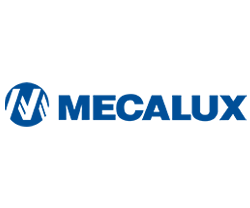In terms of solar thermal energy, Argentina has entered a process of incorporating this technology taking the construction sector as an engine for market development, in absence of laws and regulations to boost it.
There are isolated initiatives. In fact, there are municipalities with Bills or solar ordinances, such as the city of Rosario.
But we could say that the field of solar thermal energy in Argentina is still in diapers.
Up to today, year 2015, there are no comprehensive measures of solar resources available, equipment have not been subjected to testing or certification and have no market sector statistical information.
Generally thermo-siphon systems are installed for DHW heating in houses and townhouses where there is no access to the gas network. Equipment for pool heating are also installed.

A 2009 estimate indicates that around 2,000 m² (about 22,000 ft²) of collectors were installed that year and were about doubled in 2010, reaching 4,000 m2 (about 43,000 ft²).
Flat collectors then constituted 2/3 of the market with a large proportion of domestic products, being vacuum tubes the most imported collectors.
In 2015, it is calculated that above 30,000 m² (around 323,000 ft²) collector capacity was installed; half of them for heating outdoor pools.
Most companies in the sector are located in the Central Region (mainly in Buenos Aires) and the Northwest Region is the one with the largest area of collectors installed, followed by the Northeast.
How could this technology’s sustained development be boosted ?
As far as the public sector is concerned, it would require:
– Elimination of the competitive disadvantage caused by high subsidies for electricity and gas network.
– Standards sanctioning and incentives creation.
– Set an example by incorporating solar systems in its infrastructure facilities.
As for the private sector, it would require:
– Introducing improvements in product quality.
– Training skilled labor on sizing and system design, installation and maintenance.
– Facing the additional challenge of foreign competition, in some cases, with equipment at a lower cost and better performance than those of domestic manufacturing.
Only in the residential sector, there is an estimated potential of 6 million m2 (about 65 mill ft²) for the production of DHW; 2.2 million m2 (around 24 mill ft²) in the public, commercial and services sectors, plus a significant potential in the industrial sector.

Considering 20 years of useful life for a thermal solar system, full investment could be recovered in about 15 years in Buenos Aires province, for instance, when compared with actual price of gas network and considering its level of insolation.
However, in cases of bottled gas and electricity, solar thermal power technology is already profitable in many parts of the central and north regions of the country.
Compared with bottled gas, investment in solar thermal systems could be recovered in 2 years.
Compared with the use of an electric water heater, investment in solar thermal systems could be recovered in about 5 years.
A consistent solar thermal market would provide several benefits to the country:
– Reduction in conventional energy demand.
– Reduction in energy imports
– Reduction of greenhouse gases’ emissions.
– Creation of a new industry sector and new jobs.
– Creation of a national industry sector with high added value.
